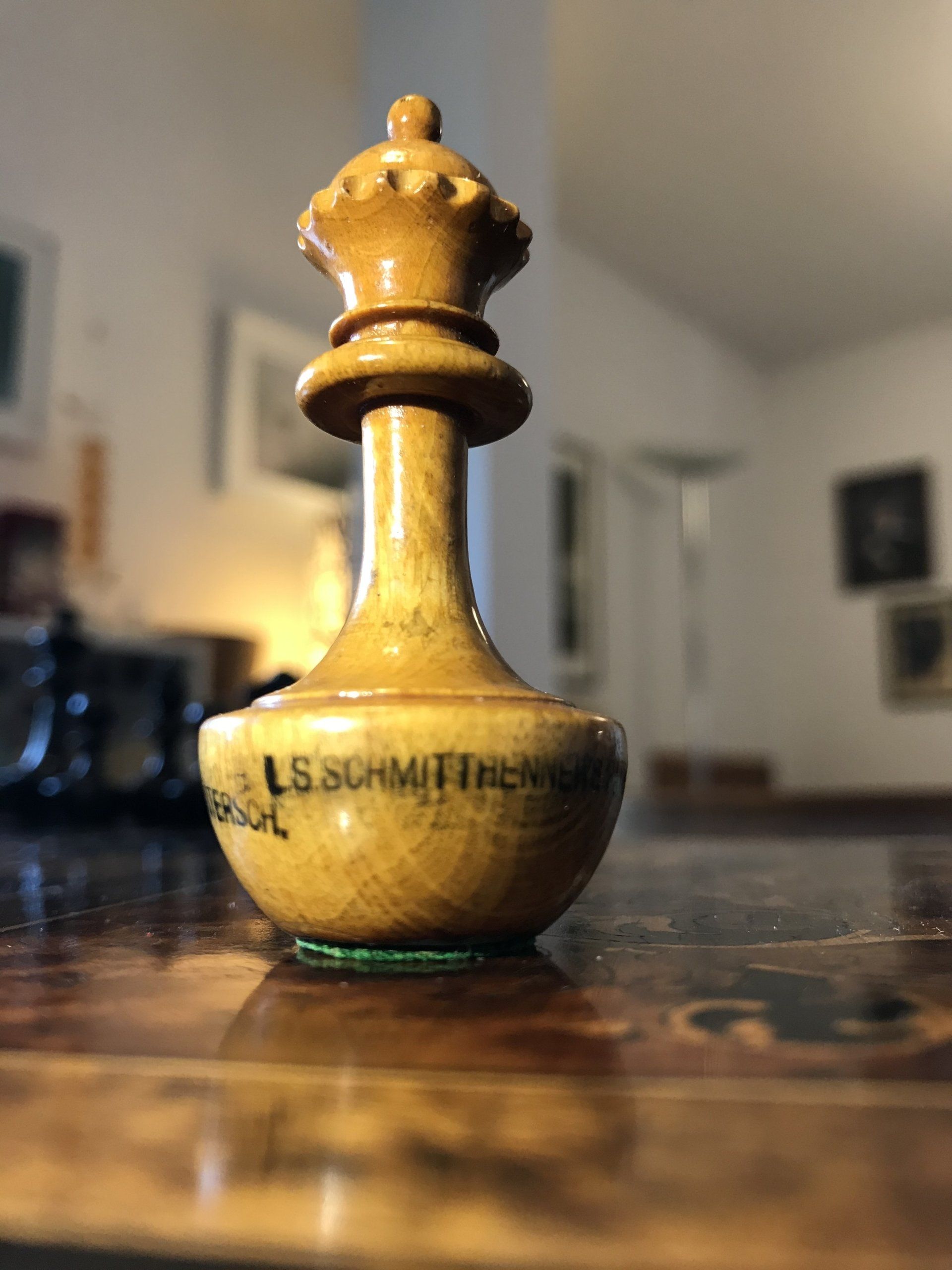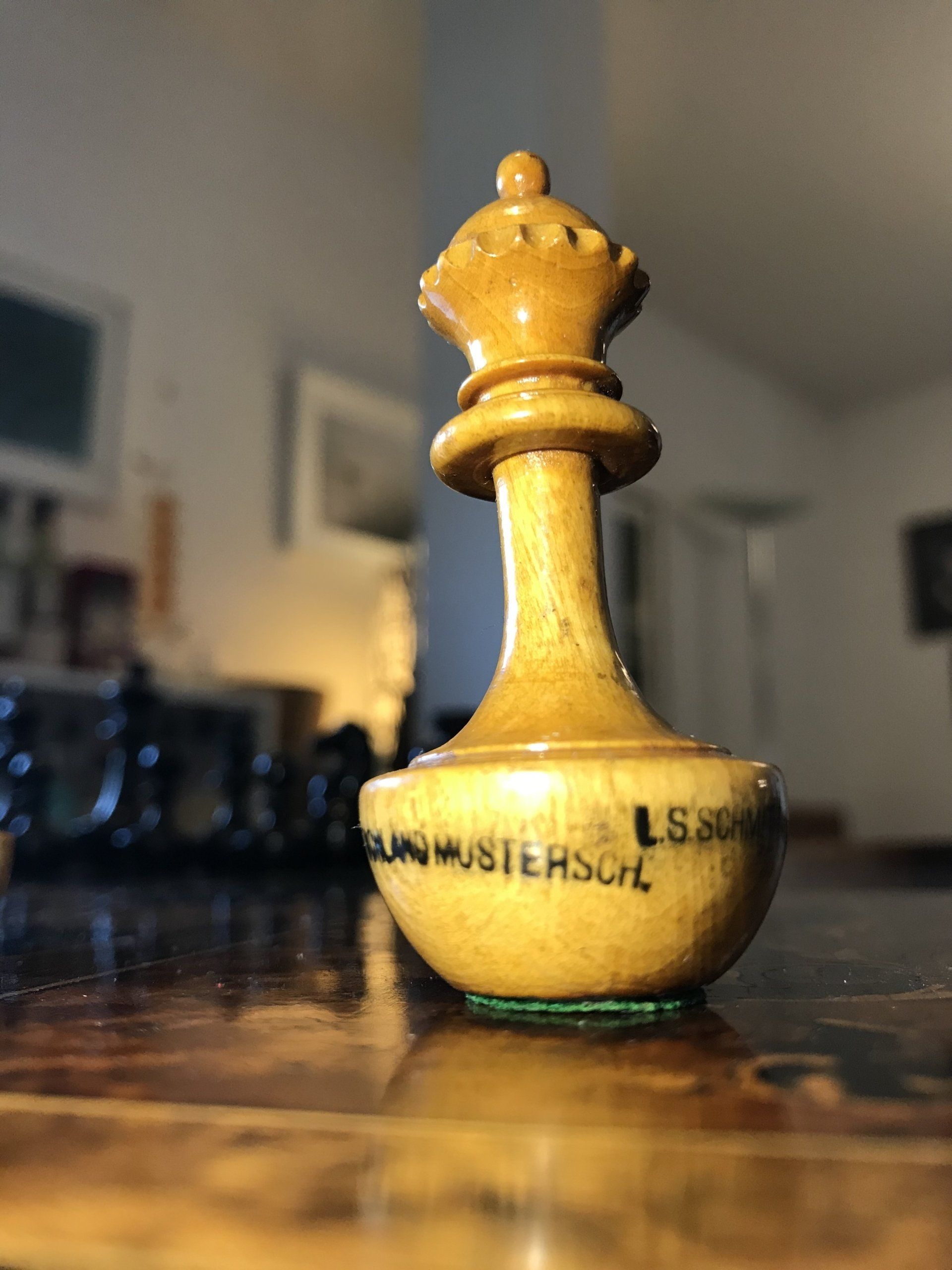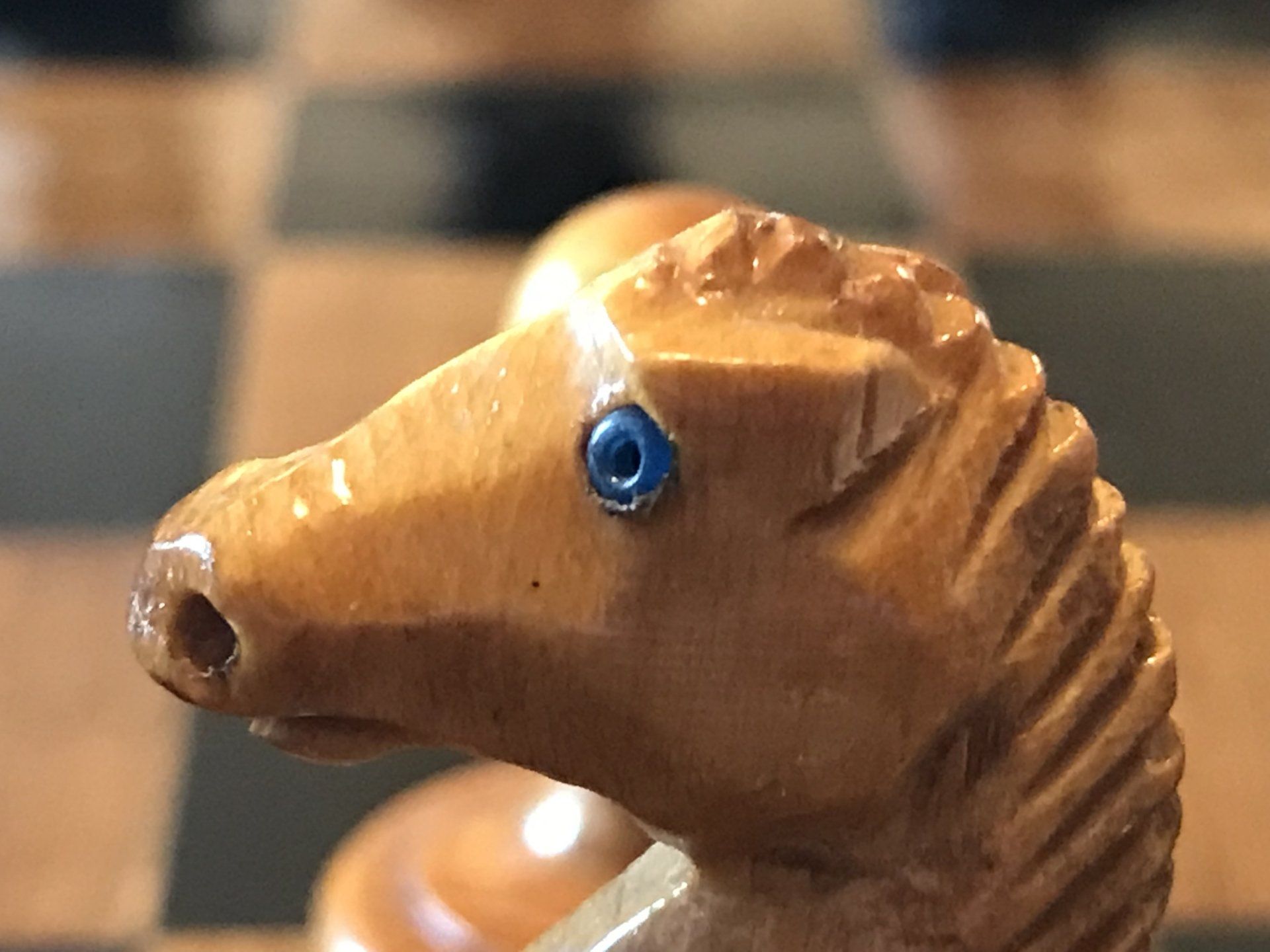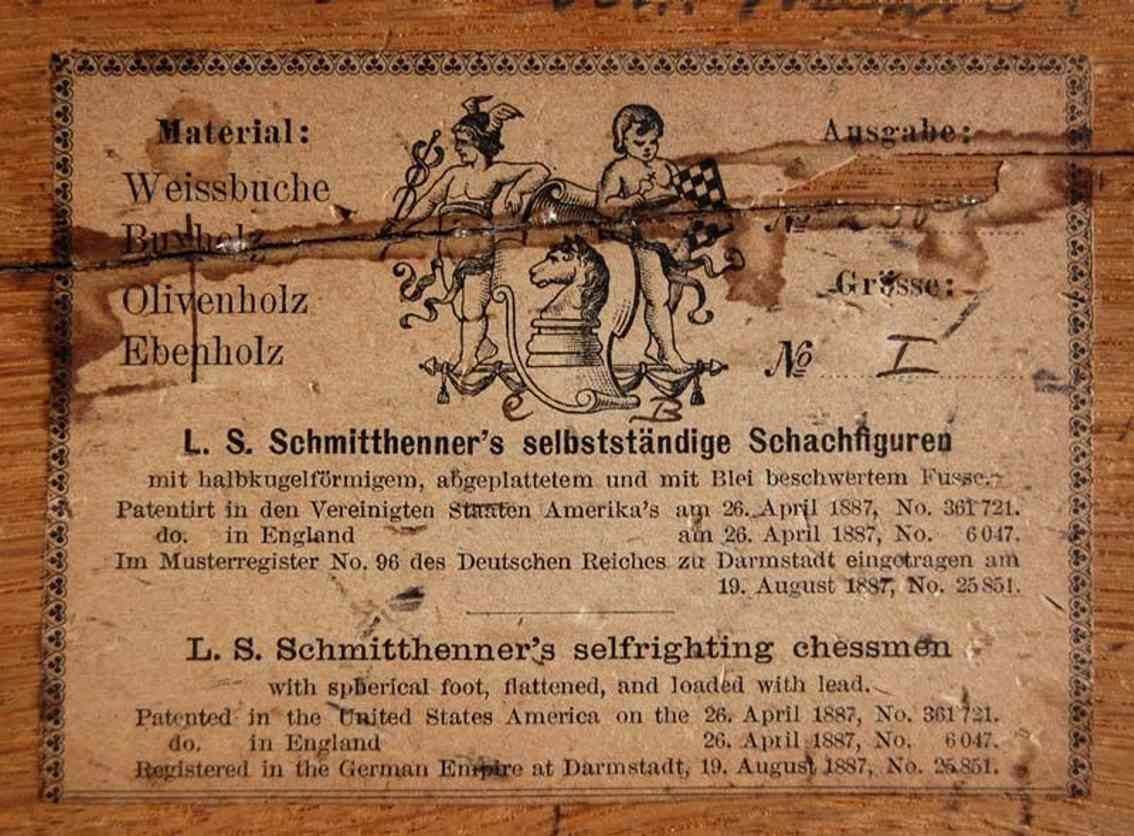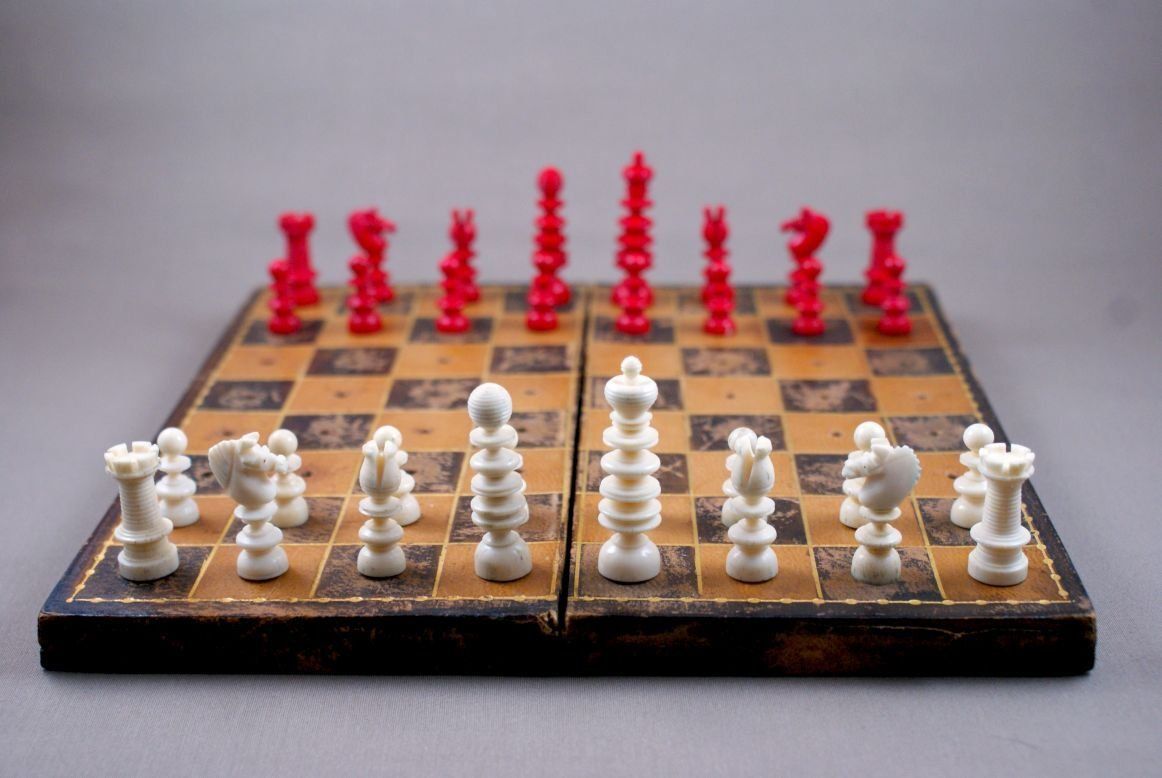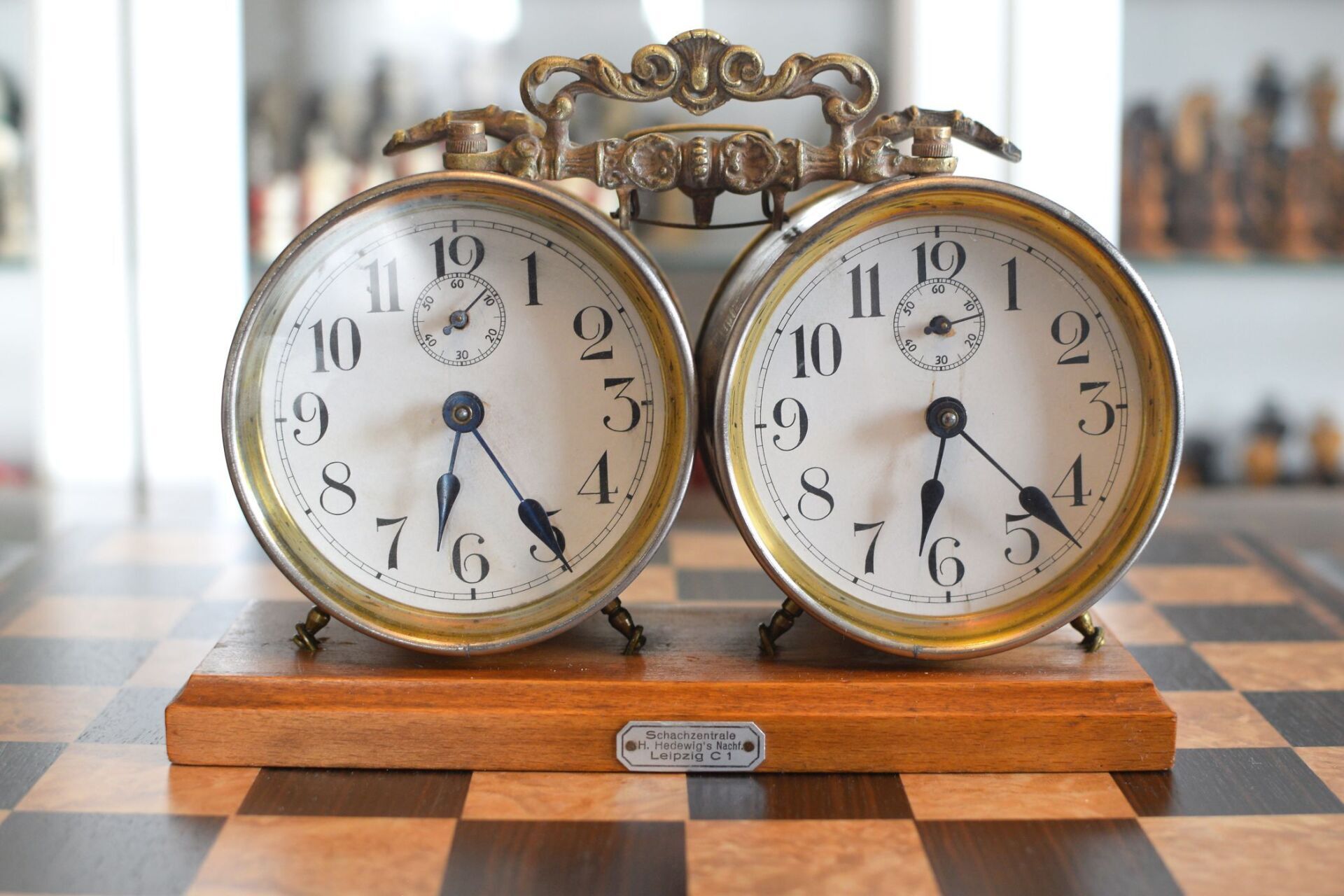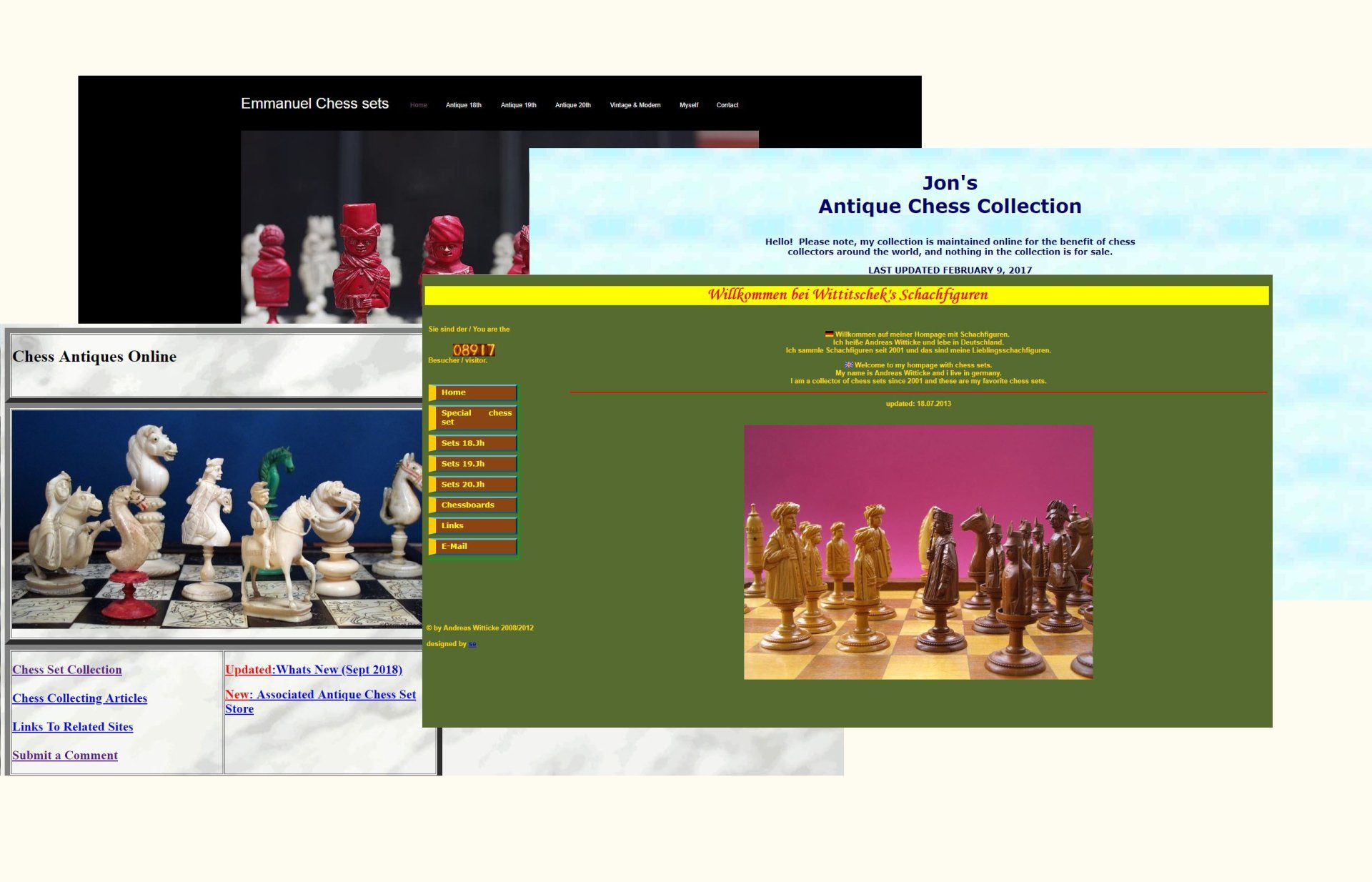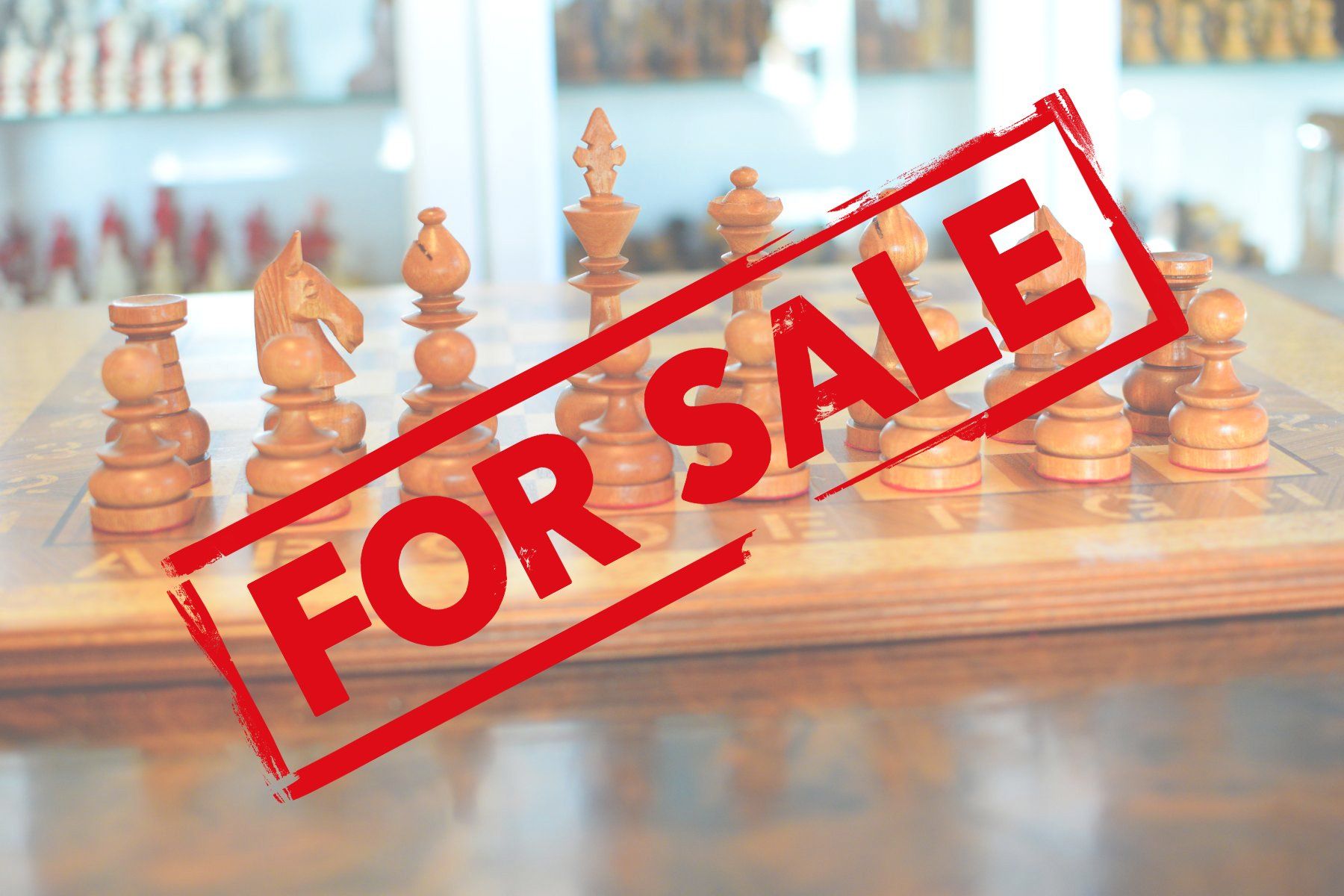German Chess Set, "Schmitthenner's Self-Righting Chessmen", 1887
A rather special German set by Schmitthenner with a King size of approximately 75 mm (i.e. a tad short of 3"). They are made of boxwood, one side natural, the other side stained black. The chess pieces are designed in the Staunton pattern. The Knights have eyes in the form of a small inlaid ring of some unknown material, probably a small metal ring. The bases of the pieces are ovoid shaped but with a flat bottom covered by felt. The bases are filled with lead, which provides for the pieces to retain an upright position, even if moved or accidentally knocked over, hence their description as "self-righting" chessmen. They were particularly popular in the UK and the US, where they were referred to as "roly-poly-sets". Sets like this have also been sold under the description "ship's chess sets", as it is assumed that they were, inter alia, used on ships as they provided some basic stability even when waves rolled the ships.
The Queen bears the inscription "L.S.Schmitthenner's Patent in England & U.St. America in Deutschland Mustersch.". This is referring to the patents granted for this particular design. A copy of the original US patent including several drawings and a written specification is shown in the pictures. The application for the US patent was filed on 9 December 1886 and the patent was licensed under no. 361,721 on 26 April 1887 and on the same day in England under no. 6047. The particulars of the German patent ("Musterschutz") are a bit unclear. According to a photo of an original label which I found on the internet, the patent was licensed on 6 August 1887 and registered under no. 25851 in the German Empire's patent register no. 36 in Darmstadt. According to a second label, which must be of a lter date, as it already refers to a prolongation of the German patent for an additional 12 years licensed on 4 August 1890, a photo of which was provided to me courtesy of Frank Camaratta, the original patent was granted already on 6 August 1887.
There are more issues not entirely clear and I hope to find out more about the sets in the future. The patent shows a different non-Staunton design of the King. This is supposedly the earliest form under which this set was distributed. In their catalogue of the exhibition "Schachpartie durch Zeiten und Welten", which was held from 5 May to 28 August 2005 in the Museum für Kunst und Gewerbe in Hamburg/Germany, Professors Barbara & Hans Holländer show a Schmitthenner set with Kings in the Staunton design similar to the set shown here, but with a different Knight with an elongated neck. In addition, in their corresponding notes, they make reference to a sales prospectus of Schmitthenner, according to which the set was available in three sizes, i.e. with a King size of 6.5 cm, 7.5 cm and 9 cm. Further, the afore mentioned label shows a hand written number which suggests that a limited number of only 250 sets was produced of these sets. It is unclear, however, if this refers only to the non-Staunton type or if this includes already the other sizes / types of the set.
According to the website of the German chess museum, "not much is known about the turner L.S. Schmitthenner". This, however, is not entirely true. I did some research and found a surprisingly large amount of information on the Schmitthenner family - originally from the Nuremberg region -, which is due to the fact that some of his family members were rather prominent members of the Evangelical Church of Baden in the southwest of Germany with a large amount of genealogical data still kept in their archive. His nephews Adolf Schmitthenner (1854-1907) and Karl Ludwig Wilhelm Schmitthenner (1858-1932), both sons of his older brother Johann Heinrich August Schmitthenner (1818-1893), were well known theologists. Adolf was famous not only known for his theological work, but also as the author of a few popular novels. Karl Ludwig Wilhelm served as prelate of the Evangelical Church of Baden, as such being also the representative of the church in the court of estates (Ständeversammlung) of Baden and for some time as the dean at the court of the Grand Duke Friedrich II. of Baden.
Back to the designer himself: the full name of "L.S. Schmitthenner" is Ludwig Sigismund Schmitthenner. He had at least one older brother (Johann Heinrich August, cf. supra) and a younger brother named Karl Philipp Schmitthenner (1829-1914) as well as a sister Wilhelmine, of which I could not find anything in particular other than she presumedly resided in Heidelberg in 1860/1861. Ludwig Sigismund Schmitthenner was born in 1819. He spent some of his early years both, in London and St. Petersburg. In between 1829 and 1861 he repeatedly sent letters to his family members from these two cities. He was an engineer by profession. In 1867 he resided for a short while in Leipzig, where he also got married to Marie Karoline Elisabeth Schmitthenner, née Schmid-Monard (note the first witness on the later patent specification: "D.C. Schmid-Monnard" - most likely a member of his spouse's family). From Leipzig, the family moved to Sweden, first to Laholm (1870), later to Härnösand (ca. 1873-1882). The time in Härnösand must have been hard, as apparently Marie Karoline gave birth to three sons, all three of which died after a short while (Ludwig August, Henry Sigismund and Henry). I was not able to verify whether they had other children. The archives did not contain any indication of that. Anyhow, around 1885 Schmitthenner moved back to Germany and took residence in Bleichstraße 35 in Darmstadt. He lived to see his patent licensed, as mentioned above, but died a few years later in 1894.
